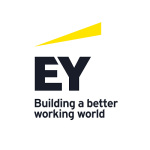Like other parts of the world, an increasing number of jurisdictions in the Asia-Pacific (APAC) region are taking active steps towards the implementation of pillar two of the OECD/G20 BEPS 2.0 project. However, the roll-out of pillar two in APAC is staggered across 2024 and 2025, resulting in varying degrees of impact for multinational enterprise (MNE) groups operating in the region in the first (and, indeed, subsequent) years of application of these rules.
For instance, while Australia, Japan, and South Korea have announced plans or enacted legislation to bring some of the pillar two measures into force in 2024, other jurisdictions – such as Hong Kong, Singapore, and Thailand – have indicated that they will delay the implementation of any pillar two measure to 2025.
This article reviews some of the implications and potential opportunities associated with the staggered implementation of pillar two in APAC.
1 Overview of pillar two
As a recap, pillar two sets forth global minimum tax mechanisms to ensure that MNE groups with annual revenues of €750 million or more are subject to a minimum effective tax rate (ETR) of 15% on their profits in every jurisdiction where they operate. The Global Anti-Base Erosion Rules (the GloBE Rules) – which comprise the income inclusion rule (IIR) and the undertaxed profits (or payments) rule (UTPR) – consist of defensive tax measures that jurisdictions can adopt to collect additional tax (called top-up tax) from MNE groups doing business in low-tax jurisdictions (i.e., jurisdictions where a group’s ETR is below 15%).
The IIR is the primary mechanism for charging top-up tax under the GloBE Rules. Under the IIR, top-up tax is paid at the parent entity level when a foreign subsidiary entity is low taxed, in proportion to the parent’s ownership interest in the foreign low-tax entity. The IIR follows a top-down approach requiring the top parent entity subject to an IIR to pay the top-up tax. Generally, the ultimate parent entity (UPE) of an MNE group will pay the top-up tax, unless the UPE is located in a jurisdiction that has not implemented the IIR, in which case the liability to pay top-up tax will shift to the highest intermediate parent entity that is subject to an IIR.
The UTPR is a ‘backstop’ rule for charging top-up tax that applies where neither the UPE nor any intermediate parent entity is subject to an IIR. In these circumstances, the top-up tax due in respect of low-tax constituent entities is allocated to jurisdictions where the group has operations and that have implemented the UTPR, in accordance with a specific allocation formula. The amount of top-up tax allocated to a jurisdiction under the UTPR is imposed on local group entities by way of deduction denial or an equivalent adjustment. One notable difference with the IIR is that the top-up tax imposed under the UTPR is collected without regard to the group’s ownership interest in low-tax group entities, resulting in the collection of the entire amount of top-up tax payable in respect of these entities. So far, jurisdictions in APAC have not implemented the UTPR in 2024.
In addition to the IIR and UTPR, a jurisdiction may also impose a qualified domestic minimum top-up tax (QDMTT), which is a domestic minimum tax calculated consistently with the principles applicable under the GloBE Rules. A QDMTT is given precedence over the IIR and the UTPR under the GloBE Rules to safeguard the right of any jurisdiction to impose top-up tax on local group operations that are low taxed. The GloBE Rules allow the amount of top-up tax paid under a QDMTT to be fully credited against the top-up tax that would otherwise be due under the GloBE Rules. Furthermore, and if a QDMTT meets the requirements of the so-called QDMTT safe harbour, any top-up tax under the GloBE Rules will be deemed to be zero.
2 Implementation of pillar two in APAC
The below table shows the pillar two implementation timetables expected to be followed in the APAC region, based, among others, on public announcements made to this effect.
Legislation enacted for 2024–25 | Expected implementation in 2024 | Expected implementation in 2025 | No announcements but expected to implement |
Japan · IIR – from fiscal years beginning on or after April 1 2024 (legislation enacted) · UTPR/QDMTT – under consideration South Korea · IIR – from fiscal years beginning on or after January 1 2024 (legislation enacted) · UTPR – from fiscal years beginning on or after January 1 2025 · QDMTT – no clear position Vietnam · IIR/QDMTT – from fiscal years beginning on or after January 1 2024 (legislation enacted) · UTPR – under consideration New Zealand · IIR/UTPR – from fiscal years beginning on or after January 1 2025 (legislation enacted) · Domestic IIR – from fiscal years beginning on or after January 1 2026 (legislation enacted) Malaysia · IIR/QDMTT – from fiscal years beginning on or after January 1 2025 (legislation enacted) · UTPR – No clear position |
Australia · IIR/QDMTT – from income years starting on or after January 1 2024 (budget proposal) · UTPR – from income years starting on or after January 1 2025 (budget proposal) |
Hong Kong SAR · IIR/UTPR/QDMTT – from fiscal years starting on or after January 1 2025 (consultation stage) Singapore · IIR/QDMTT – from fiscal years starting on or after January 1 2025 (budget proposal) · UTPR – under consideration Thailand · Drafting of legislation under way, with an effective date in 2025 |
Indonesia |
No announcement and not clear if they will implement | |||
Chinese mainland Cambodia Laos Myanmar Philippines
|
Other regions, such as the EU and the UK, follow a 2024 timetable with GloBE implementation. Therefore, APAC MNEs with European or other non-APAC-based subsidiaries may have additional top-up tax risks or administrative requirements.
3 Impact of pillar two in 2024
The presence at the top of the group structure of a UPE subject to an IIR in 2024 is a key factor driving the complexity for this year. The discussion below distinguishes between groups with a UPE that will be subject to an IIR and those that will not.
3.1 Groups with a UPE subject to an IIR in 2024
3.1.1 Only the UPE jurisdiction implements the IIR in 2024
Where the UPE is subject to an IIR in 2024, GloBE computations have to be undertaken to determine the group’s jurisdictional ETR in each jurisdiction where the group carries out operations, either through a subsidiary entity or a permanent establishment.
In Example 1, the UPE is located in Japan and holds a direct subsidiary in Hong Kong and an indirect subsidiary in Thailand. Furthermore, the UPE has a March year end. Because Japan’s IIR is operational in 2024, the Japanese UPE needs to undertake GloBE computations to determine the group’s jurisdictional ETR in Hong Kong and Thailand. Any top-up tax will be payable in Japan under the IIR.

As the consolidated financial statements of the group are the starting point for determining the GloBE income or loss of the Hong Kong and Thailand subsidiary entities, any mismatch between the fiscal year of the Japanese UPE and the respective fiscal year of the subsidiaries is unlikely to create any practical difficulties. That is, unless either of the subsidiary entities opts to determine its GloBE income or loss using an acceptable or authorised financial accounting standard different from the accounting standard used in the consolidated financial statements, which is only permitted where the application of the latter would not be reasonably practical and specific conditions are met.
However, the issue could be more complex where a QDMTT applies in a subsidiary jurisdiction, as discussed in section 3.1.3.
3.1.2 Multiple jurisdictions implement the IIR in 2024
The application of the IIR generally follows a top-down approach. Where the UPE is subject to an IIR, any top-up tax will be payable by the UPE.
However, the top-down approach is subject to certain intricacies in split ownership situations. Where non-group members hold more than 20% in an intermediate parent entity located in a jurisdiction with an operational IIR, this intermediate parent entity (referred to as a ‘partially owned parent entity’, or POPE) will apply the IIR in priority over any upper-tier intermediate parent entity in respect of low-taxed profits of a subsidiary entity.
Furthermore, any intermediate parent entity that is a POPE is required to pay top-up tax based on its own ownership interest in the low-tax subsidiary entity rather than the group’s ownership interest. As such, a POPE may have to bear greater top-up tax liability, as demonstrated in Example 2.

In this example, the intermediate parent entity located in Vietnam is a POPE since 30% of its ownership interest is held by non-group members. Therefore, the Vietnamese entity will be required to apply the IIR in priority over the Australian UPE and pay any top-up tax in respect of the profits derived by the Thai subsidiary. Furthermore, the Vietnamese entity will have to pay top-up tax proportional to its own ownership interest (i.e., 100%) in the Thai subsidiary and will bear the entirety of any top-up tax in respect of the Thai subsidiary’s profits. Therefore, a greater amount of top-up tax will have to be paid in respect of any low-taxed profits of the Thai subsidiary.
Interestingly, the delayed implementation of pillar two in certain APAC jurisdictions has relieved MNE groups from the application of the rules for POPEs in 2024, and the higher top-up tax burden that ensues. For instance, if, instead of being located in Vietnam, the POPE were located in Hong Kong (see Example 3), the Australian UPE would then apply the IIR and the amount of top-up tax collected would be established by reference to the group’s ownership interest in the Thai entity, which is 70%. Accordingly, a lower amount of top-up tax would be payable.

Once the IIR enters into effect in Hong Kong in 2025, this benefit will, however, be lost.
3.1.3 Impact of a QDMTT
Where a QDMTT applies in a subsidiary jurisdiction, any QDMTT top-up tax paid to that jurisdiction in respect of the low-taxed profits of a domestic subsidiary entity is fully creditable against the IIR top-up tax payable by any upper-tier parent entity. If the amount of QDMTT top-up tax is the same as, or greater than, the amount of IIR top-up tax, no top-up tax will be payable under the IIR. In addition, if the local QDMTT legislation would be compliant with the QDMTT safe harbour, the top-up tax under the GloBE Rules (i.e., the IIR and UTPR) will be deemed to be zero.
A QDMTT can result in a higher amount of top-up tax than the IIR when an MNE group does not wholly own a low-tax subsidiary entity since a QDMTT must, in principle, impose the entire amount of jurisdictional top-up tax in respect of domestic low-tax entities, irrespective of the ownership interests held by the group in those entities. However, upon implementation, jurisdictions may also decide to apply the QDMTT only to MNE groups of which the entities are 100% owned by the UPE or the POPE for the entire financial year.
Contrary to the GloBE Rules, controlled foreign corporation taxes paid by a foreign parent in respect of a domestic subsidiary entity are not required to be taken into account when determining the top-up tax applicable under a QDMTT. This can increase the QDMTT top-up tax liability beyond what would otherwise be payable under the IIR.
The fact that some APAC jurisdictions will postpone the introduction of their QDMTT to 2025 has relieved certain groups from the extra burden associated with a QDMTT in 2024. Example 4 illustrates this situation.

For the purpose of Example 4, it is assumed that a top-up tax amount of 100 is required to bring the ETR of the Hong Kong subsidiary entity to 15%. Since the Australian UPE holds only 90% of the ownership interest in the Hong Kong subsidiary, the amount of top-up tax collected under the IIR in 2024 is limited to 90. In 2025, if Hong Kong implements a QDMTT, this benefit will no longer apply.
Lastly, it is also important to note that the GloBE Rules allow local group members to use a local authorised financial accounting standard that is different from the standard used in the consolidated financial statements for the purpose of determining the top-up tax payable under a QDMTT (provided that the locally authorised accounting standard is an acceptable financial accounting standard or has been adjusted to prevent any material competitive distortions). Since financial results could, however, vary under different accounting standards, mismatches could arise between the amount of top-up tax payable under a QDMTT and the GloBE Rules. If the QDMTT top-up tax ends up being lower than the top-up tax for GloBE purposes, then a residual amount of top-up tax would still be due under the IIR (or UTPR) after the application of the QDMTT, unless the QDMTT would meet the requirements of the QDMTT safe harbour.
3.2 Groups with a UPE not subject to an IIR in 2024
MNE groups with a UPE located in a jurisdiction that does not implement any pillar two measures in 2024 may also be affected by pillar two. The implications for these groups, however, vary considerably, some experiencing a substantial increase in the complexity of their tax management function and significant top-up tax risks in 2024, with others being able to avoid any impact in 2024.
As large MNE groups that are in scope of the GloBE Rules tend to carry out activities in a wide array of jurisdictions, groups with a UPE located in a jurisdiction that does not adhere to the 2024 timeline will be impacted by pillar two to a certain degree, as illustrated by the examples below.
3.2.1 Intermediate parent jurisdiction with an IIR in 2024
The presence of an intermediate parent entity located in a jurisdiction with an IIR operational in 2024 brings significant complexity and top-up tax risks for a group – even if the UPE is not located in an implementing jurisdiction in that year.
3.2.1.1 Location of the intermediate parent entity in the ownership structure
Generally, the positioning of the intermediate parent entity within the ownership structure is expected to influence the level of complexity and top-up tax risk associated with the IIR; i.e., the higher the intermediate parent entity is within the group’s ownership structure, the outcomes tend to more closely resemble those applicable in respect of groups subject to an overarching IIR at the UPE level in 2024.
In Example 5, an intermediate parent entity located in Australia has a direct subsidiary in Hong Kong and an indirect subsidiary in Thailand. If Australia’s IIR is operational in 2024, as is expected, the Australian intermediate parent entity will need to undertake GloBE computations to determine the group’s jurisdictional ETR in Hong Kong and Thailand.

By comparison, in Example 6, the Australian intermediate parent entity sits in a lower tier of the structure and only holds the subsidiary located in Thailand. As a result, GloBE computations will only have to be undertaken in respect of the Thai subsidiary and the top-up tax risk is limited to this entity.

In some cases where the intermediate parent entity is located in a more isolated segment of a group structure, the impact of the IIR tends to be more limited.
Another consideration is that when GloBE computations must be performed in respect of a subsidiary held by an intermediate parent entity subject to an IIR, these computations will have to take into account all group entities located in the same jurisdiction, including those in which the intermediate parent has no ownership interest, since the GloBE Rules apply on a jurisdictional basis. Therefore, the fact that an intermediate parent entity does not hold ownership interests in all the subsidiary entities located in a particular jurisdiction will not materially alleviate the group’s compliance burden in respect of the entities in that jurisdiction.
3.2.1.2 Intermediate parent entity that is a POPE
As explained in section 3.1.2, a POPE takes priority to apply the IIR over any other upper-tier parent, including the UPE, and will pay top-up tax based on its ownership interest in any low-tax subsidiary entity. Groups that comprise a UPE and an immediate parent entity that is a POPE that are both located in non-implementing jurisdictions will be temporarily relieved from any top-up tax burden in 2024.
3.2.2 Impact of a QDMTT
The introduction of a QDMTT brings additional complexity and top-up tax risk in 2024, but the impact should generally be more limited since a QDMTT applies only in respect of entities located in the QDMTT implementing jurisdiction.
3.2.3 Joint ventures
The GloBE Rules contain special rules for joint ventures (JVs) that may require an MNE group to pay top-up tax in respect of the low-taxed income derived by a JV, even if the JV entity is not a member of the group. An entity is considered a JV under the GloBE Rules when its financial results are reported under the equity method by the group and the UPE (indirectly) holds at least 50% of the ownership interests in the JV entity.
When an entity is a JV for GloBE purposes, it must undertake GloBE calculations to determine whether its profits (as well as any profits derived by the subsidiaries forming part of the JV group) are low taxed. Where this is the case, the top-up tax applicable in respect of any low-taxed profits will be payable by the MNE group, in proportion to its ownership interests in the JV and JV subsidiaries.

In Example 7, 50% of the top-up tax in respect of any low-taxed profits of the Singaporean JV are not collectable in 2024 since the Hong Kong entity is not subject to an IIR in this year. The remaining 50% is, however, payable by the Vietnamese entity, which is subject to an IIR in 2024. Based on this example, the staggered implementation of pillar two offers opportunities for groups with a UPE located in a non-implementing jurisdiction to defer the impact of pillar two in relation to JVs. This, however, assumes that the JV jurisdiction has not implemented a QDMTT in 2024.
4 Impact of pillar two in 2025
As more jurisdictions in the region are expected to have pillar two measures in force by 2025, the impact of these rules will increase in APAC and more closely resemble the impact experienced in other regions.
MNE groups that benefited in 2024 from a delay in the implementation of pillar two in jurisdictions such as Hong Kong, Singapore or Thailand will no longer obtain that benefit in 2025 (assuming these jurisdictions introduce pillar two measures as announced) and will have to reassess the application of pillar two measures to their entities. This will mean greater complexity and top-up tax risks for these groups.
In addition, groups that were already subject to pillar two in 2024 may also have to reassess the application of these rules, since the right to collect top-up tax may be awarded to different jurisdictions in 2025 and new reporting obligations may arise. In particular, as most jurisdictions implementing the GloBE Rules in 2025 are also expected to introduce QDMTTs, separate reporting and payment of top-up tax (if any) may need be performed in each of these jurisdictions given that QDMTTs apply independently and have precedence over the IIRs or UTPRs in place in other jurisdictions.
A broader application of QDMTTs also means that more top-up tax may become payable by groups that are not wholly owned in 2025, since these QDMTTs will require the collection of the entire amount of top-up tax payable in respect of low-tax entities, irrespective of the ownership interest held in these entities. As previously mentioned, this assumes that jurisdictions will not limit the application of the QDMTT to entities that are 100% owned by the MNE group.
5 Transitional country-by-country reporting safe harbour and UTPR safe harbour
Apart from the timing of the application of the GloBE Rules in different APAC and non-APAC jurisdictions, another matter that requires timely attention would be the transitional country-by-country reporting safe harbour (TCSH) developed by the OECD/G20 Inclusive Framework on BEPS (the Inclusive Framework).
The TCSH can provide MNE groups with compliance relief in jurisdictions with a low-risk profile under the pillar two rules. However, it only offers a short-term relief from computing top-up taxes during an initial transitional period that covers financial years commencing before December 31 2026 and not ending after June 30 2028. The TCSH follows a ‘once out, always out’ approach; i.e., if a jurisdiction fails to meet any of the tests or opts out from the TCSH in a fiscal year, it would not be eligible to obtain TCSH relief in subsequent fiscal years. For MNE groups with a December year end coming into the GloBE Rules on January 1 2024, the TCSH will apply for 2024, 2025, and 2026, and such MNE groups would need to ensure the TCSH is applicable for the relevant jurisdictions in 2024, which is a prerequisite for it to consider the relief for 2025 and 2026 as well.
The applicability of the TCSH is determined based on the de minimis test, the simplified ETR test, or the routine profits test. If any of these are met, the top-up tax under the GloBE Rules for that jurisdiction is deemed to be zero. Given the complexity and the interplay of the TCSH and the GloBE Rules, the OECD has issued guidance on the TCSH with regard to common issues, including the assessment of financial statements to be ‘qualified’ for the TCSH, the treatment of purchase price accounting adjustments, and hybrid arbitrage arrangements. It is also noted that MNE groups continue to have a (simplified) reporting obligation under the GloBE Rules, even if the requirements of the TCSH are met.
In addition to the TCSH, the Inclusive Framework introduced a UTPR safe harbour to provide for sufficient time for jurisdictions to implement the QDMTT. Under the provisions, top-up tax calculated under the UTPR for a UPE jurisdiction will be zero if the corporate income tax rate of the UPE jurisdiction is at least 20% (the corporate income tax rate for each jurisdiction is the nominal statutory tax rate generally imposed on in-scope MNE groups on a comprehensive measure of income). The relief is applicable for a transitional period for fiscal years that run no longer than 12 months that begin on or before December 31 2025 and ending before December 31 2026.
6 Accounting for income taxes under pillar two rules
Lastly, potential accounting disclosures for income taxes related to pillar two will need to be considered on a timely basis. Given that a number of APAC jurisdictions have started to issue draft legislation to implement pillar two legislation or have already substantively enacted the pillar two legislation, MNE groups need to consider the relevant impact for income tax accounting for pillar two top-up taxes in their financial statements under the relevant accounting standards, such as IAS 12 and ASC 740, in a timely manner. In-scope entities may already be required to disclose information on the potential exposure to pillar two income taxes for annual reporting periods beginning on or after January 1 2023 under IAS 12 or equivalent local accounting standards.
Furthermore, MNE groups that apply International Financial Reporting Standards, the US Generally Accepted Accounting Principles, or other similar local accounting standards should carefully monitor any developments within, respectively, the International Accounting Standards Board, the Financial Accounting Standards Board, and the local country accounting standards board for guidance regarding the income tax accounting implications of pillar two in the jurisdictions in which the MNE group has operations.
7 Key takeaway
As the staggered implementation of pillar two in the APAC region may offer opportunities to reduce the compliance burden and top-up tax risk associated with these rules in 2024, in-scope MNE groups should closely monitor the roll-out of pillar two measures in the region and immediately assess the risk level and prepare for different outcomes, since the implementation timetable remains unclear in several jurisdictions. The application of the transitional safe harbours should be carefully examined to determine whether they could provide any transitional relief for the group. It will also be important to consider any accounting disclosure requirements that could already be applicable.
The authors would like to express their sincere gratitude to Barbara Angus, who is the EY Global tax policy leader, and Rebecca McKavanagh and Prabal Agrawal, of the EY organization, for their valuable support and contributions to this article.
The views reflected in this article are the views of the authors and do not necessarily reflect the views of the global EY organization or its member firms.















